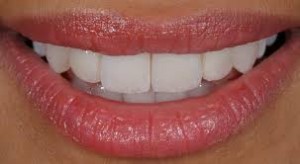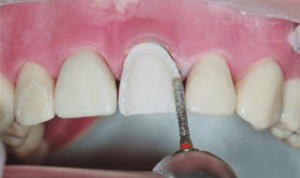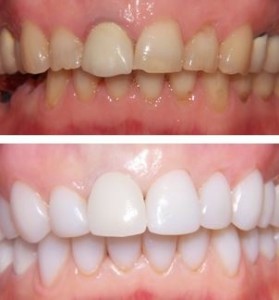Pros and Cons of Veneers

The advantages and disadvantages of veneers are closely related to the properties of the material from which they are made.
There are two types of tooth pads: direct and indirect. Direct veneers are made in the patient’s oral cavity, and indirect ones are made in the dental laboratory.
The material for the manufacture of direct tooth pads is a composite, and indirect ones can be made of porcelain or zirconium dioxide.
Ceramic veneers are made only in laboratory conditions using an impression taken from a patient’s tooth. At the time of manufacture of the plate, a temporary overlay is attached to the turned surface of the tooth.
Veneers made of ceramics are more aesthetically pleasing than composite overlays and have an unlimited service life when used correctly.
Like other methods of tooth restoration, veneers have pros and cons.
pros
- Ceramic veneer plates imitate the enamel surface. They exactly repeat the anatomical structure of the tooth.
- Ceramic pads withstand extreme temperatures. Such veneers are quite durable and able to withstand high loads. When they are used, turbidity and spots are not formed on the surface, which allows unlimited consumption of coffee, tea, red wine and other coloring drinks and products.
- Fast tooth restoration: in one or two medical appointments.
- When preparing a tooth for installing veneer, the thickness of the tooth turning is no more than 0.3 mm.
- Give teeth shine and natural whiteness.
- Correction of malocclusion, tooth shape and its position relative to others.
- Elimination of chips, enamel cracks and other defects.
Minuses

- Veneers made of porcelain do not give strength to the teeth, since they are quite fragile.
- If the rules of use are not followed, the porcelain linings may peel or break, and crack made of composite material.
- The teeth on which the veneers are installed are pre-grinded, and therefore, they will never be able to have their original appearance.
- Consequently, veneers, the installation of which caused irreparable harm to the teeth, will need to be worn throughout life.
- Composite veneers are less reliable than ceramic veneers and tarnish and change color over time. In this regard, after 3 - 5 years they require replacement.
- The aesthetics of composite linings are poor.
Indications for installation
Veneers can be used in the presence of the following defects:

- Chips, cracks, bumps in enamel.
- Teeth discoloration not whitening.
- Rough dentition.
- Crooked, underdeveloped teeth.
- The presence of gaps between the teeth.
- With abrasion of tooth enamel.
- Crowding of teeth.
- Age-related changes in teeth.
- The presence of an irregular tooth shape associated with impaired growth, malformations, injuries.
- If there is slight erosion of enamel.
- In the presence of a wedge-shaped defect.
- In the case of demineralization of enamel after applying braces.
Contraindications
The installation of tooth pads has contraindications:
- The presence of the wrong bite.
- With pathological abrasion of teeth.
- If there are no chewing teeth.
- In the presence of bad habits, for example, when opening bottles with teeth, biting off nails, threads, etc.
- Teeth grinding at night (bruxism).
- Do not install after treatment with resorcinol - the formalin method.
- If there is a large seal on the tongue side.
- Strong destruction of the lingual surface of the tooth.
- When practicing a traumatic sport.
Restoration of teeth overlays has some limitations:
- If there are diseases of the oral cavity.
- In the absence of a tooth, more than half.
- If a tooth requiring restoration is loosened.